Coffee lovers are increasingly concerned with the intricacies of coffee preparation in order to be able to enjoy coffee of the highest quality.
Eventually, that passion turns into a determination to don the barista attire and an espresso machine to buy for home.
If you are reading this article, you are probably one of them.
We assume that you have read many articles and watched videos explaining how to make delicious coffee.
You choose your beans carefully, you weigh and grind your coffee accurately, you try to press it as evenly as possible and with the right pressure, and you pay attention to the temperature of the water and the time it takes for the coffee to come out, and you only calm down when you see the pattern of a tiger skin on the espresso foam…
What is the connection between delicious coffee and the maintenance of the coffee maker?
According to barista trainers, the cleanliness of the coffee machine has a direct impact on the taste of the coffee – you may have bought the highest quality beans and mastered the intricacies of the coffee-making process, but having old coffee in the machine will affect the quality and taste noticeably affect the brewed coffee.
Not only will you have a “dirty” taste sensation at the end of the drink, but there’s a chance that the dirt is interfering with the coffee’s even extraction… and all your efforts have been for nought.
A well-maintained and clean coffee machine are therefore one of the most essential ingredients for a tasty and well-brewed coffee.
We want to reassure you right away – maintaining an espresso machine is easy.
You just have to think about it and do it regularly. So how do you take care of your espresso machines so that the coffee always tastes good?
Maintenance features for espresso machines
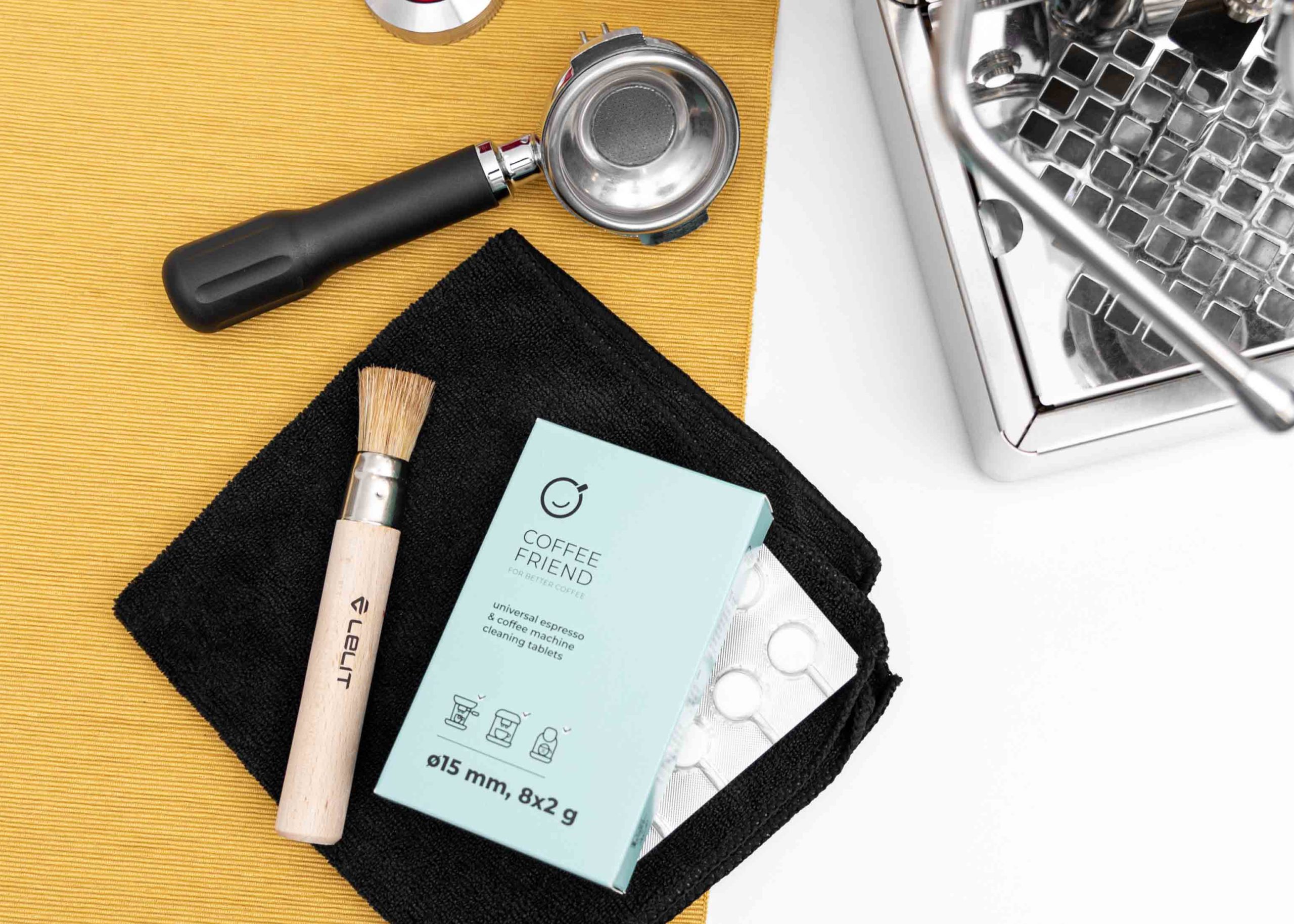
Like all coffee-making equipment, espresso machines require regular maintenance. Some need cleaning every day and others that only need maintenance once a week or even once a month.
Let’s take a closer look.
We recommend you do this daily
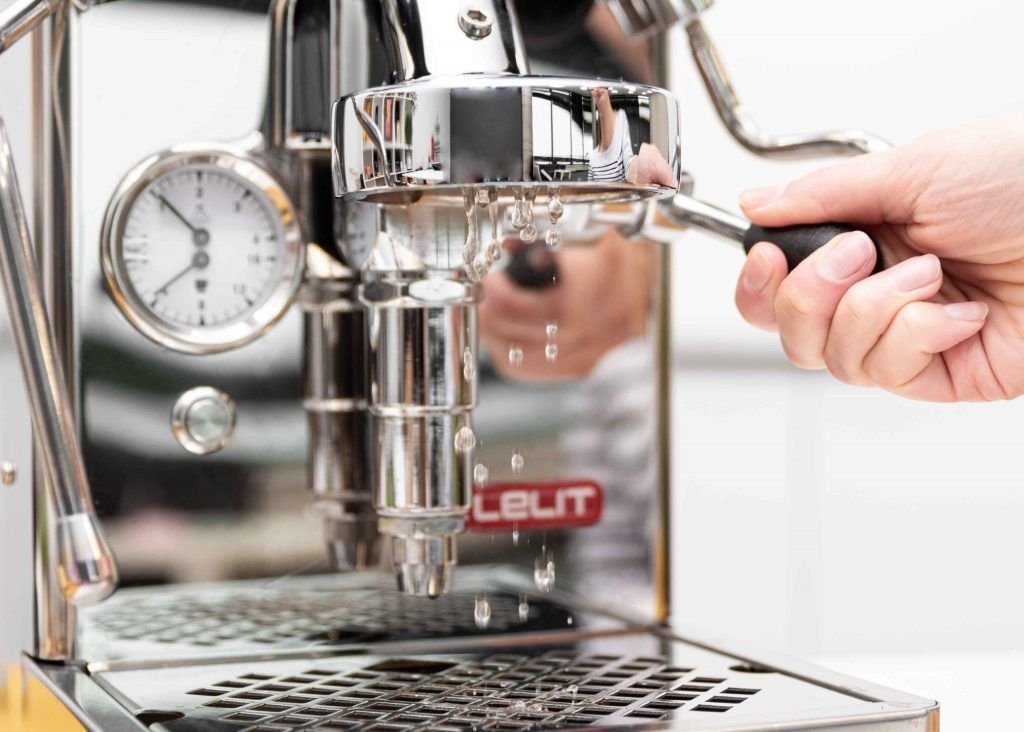 Rinsing of the coffee-making group. Rinse the coffee preparation group before and after each espresso.
Rinsing of the coffee-making group. Rinse the coffee preparation group before and after each espresso.
Simply let the water run briefly without closing the coffee brewing handle. In this way, the adhering coffee grounds are washed off the sieve into the coffee brewing group.
At the same time, the hot water heats the brewing group and ensures that the coffee does not become sour.
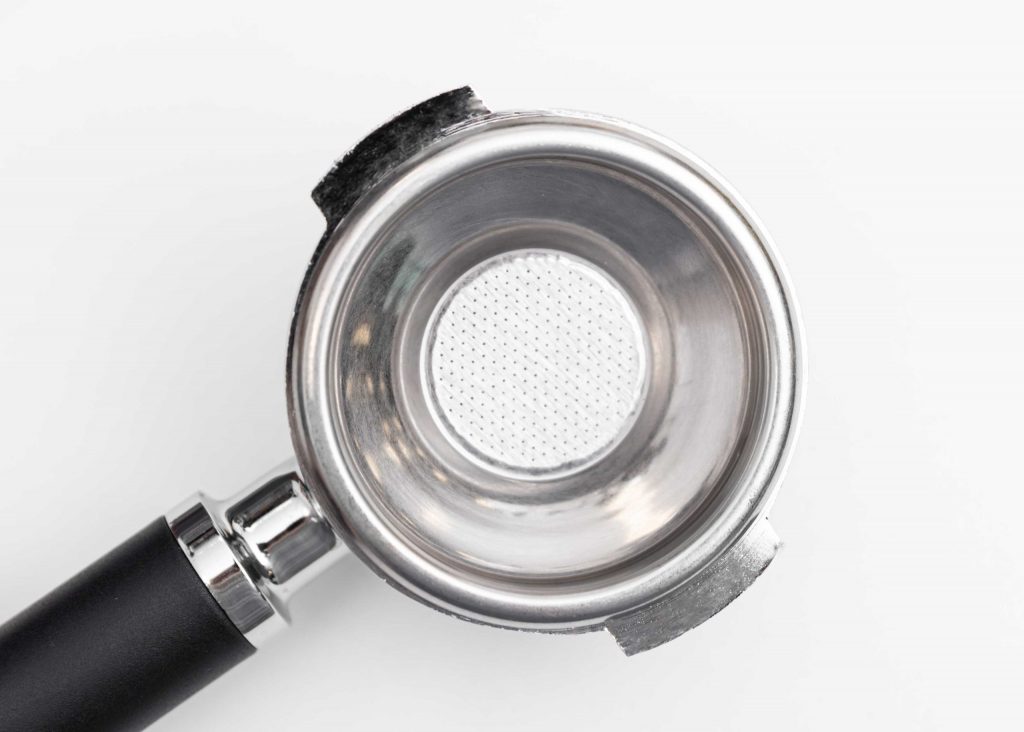
Do not leave coffee grounds in the group head. After each brewing session, shake the coffee grounds out of the portafilter and clean with dry disposable paper or cloth.
The longer the coffee grounds sit, the more difficult it is to shake them out.
In addition, the moisture that accumulates in the coffee grounds is a very favourable breeding ground for bacteria and other pests.
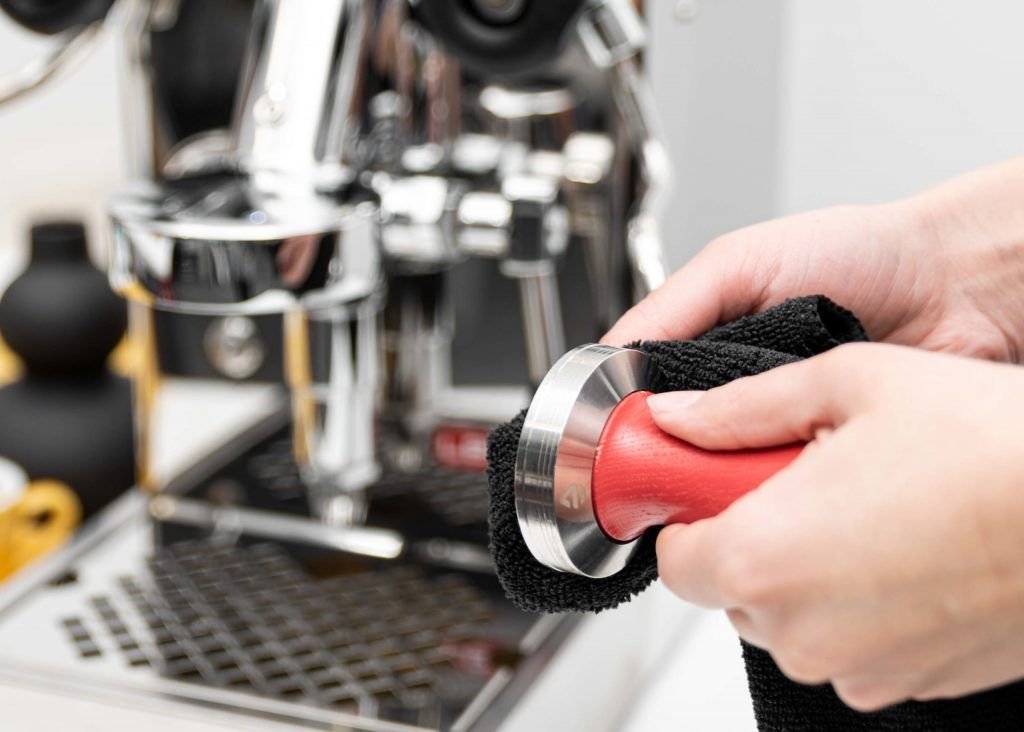
Clean the tamper. If your coffee maker comes with a built-in tamper, check the tamper before brewing coffee to make sure there are no residues from the previously pressed coffee.
Do not press a new portion of coffee with this tamper until you are sure nothing is sticking to it and the surface is smooth and dry.
If you overlook any of these aspects, an unevenly compressed coffee tablet will casually miss your espresso.
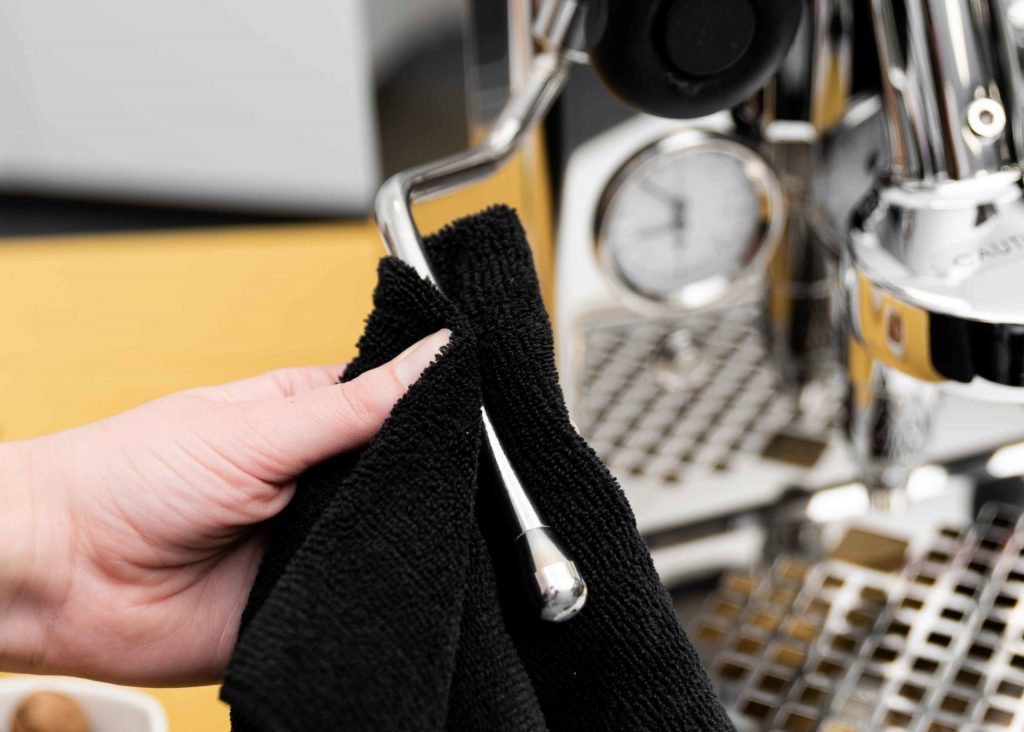
Service the milk frother hose. Always blow off some steam with a cloth before whisking the milk.
This removes milk residue and condensation from the steam pipe. When you’re done whipping the milk, wipe the tube with a damp cloth and blow off the steam as well.
In the evening, leave the hose in the milk jug soaked with water. This prevents the milk from drying out and dirt from settling.
We recommend one Cleaning liquid for the milk system to be used so that the dirt can be removed more easily.

The coffee machine must look clean. During the preparation of the coffee, the body of the device or the grates can get dirty.
We advise you to remove this dirt immediately as it is very difficult to remove it once the coffee has dried.
Although this aspect does not affect the taste, the beautiful appearance of the machine is a tribute to the preparation of the coffee and the coffee beverage.
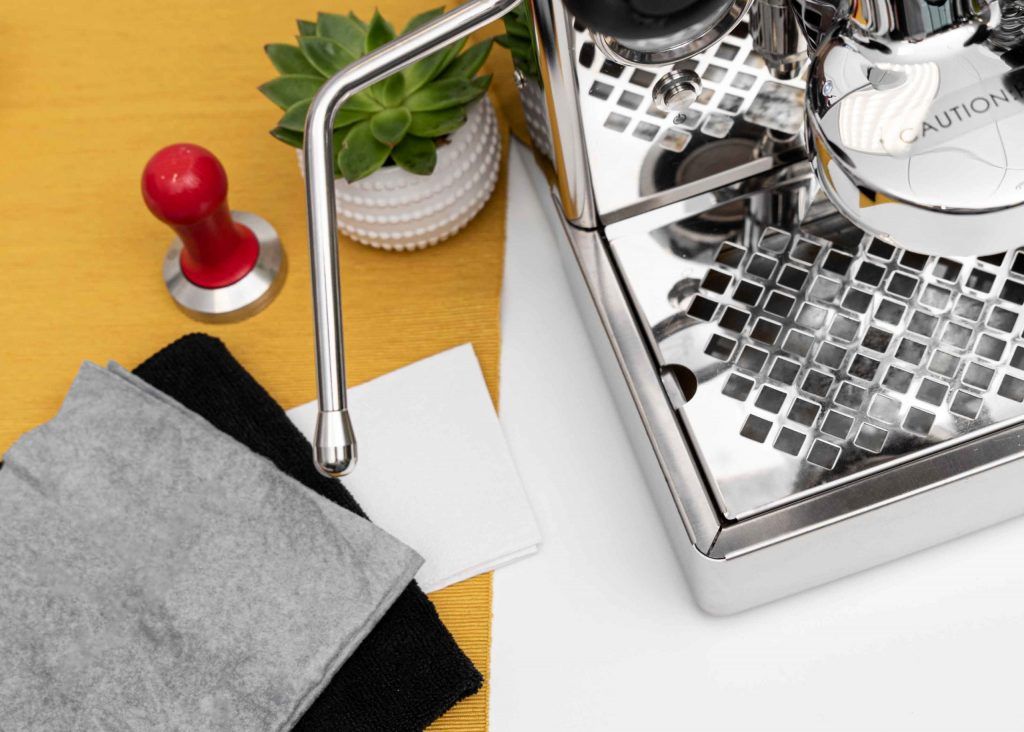
Use different towels. Have several towels ready next to the coffee maker.
One for the body of the machine, the grills and for cleaning around the machine, and another cloth (which must be damp) for cleaning the steam wand.
It’s a good idea to rinse the latter out after a series of lattes every time you know you’re not going to have any, at least for now bar or cappuccino will prepare.
Clean the portafilter with a paper towel or napkin to remove not only the coffee grounds but also the grease that has built up on it.

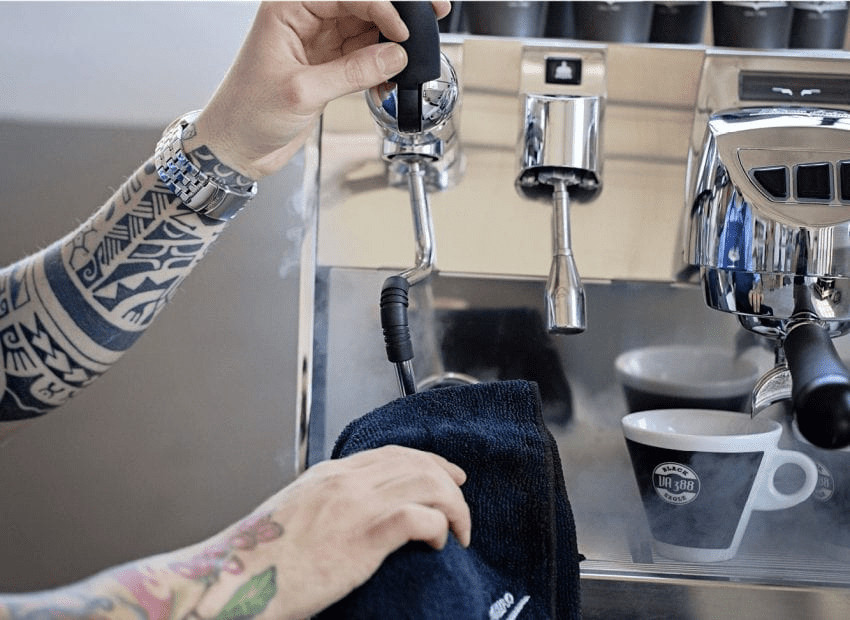

Comments are closed.